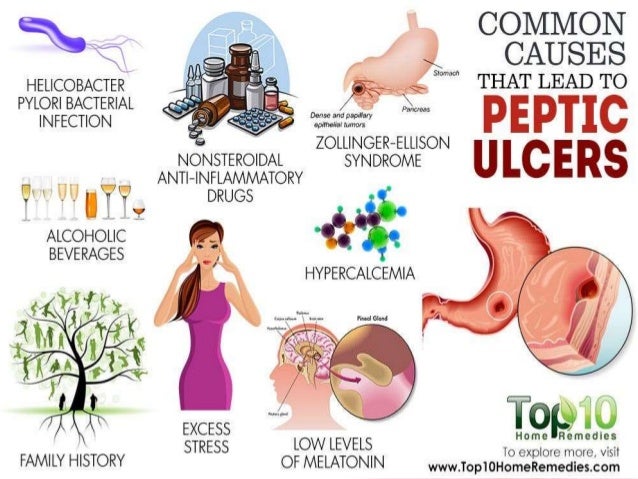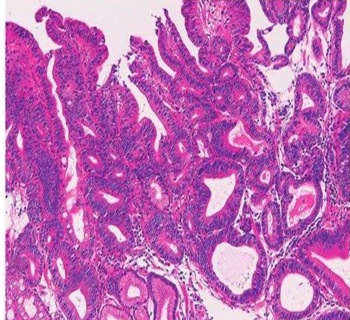stomach pathology part 2
HI, we are back again with the stomach pathology, this is part two, so if u want to keep track with us, please read Part 1 first from here,
in this part will are going to discuss the following:
Peptic ulcer disease (PUD)
Stomach tumors and more.
Starting with peptic ulcer disease (PUD):
Peptic ulcers are open sores on the inner lining of the stomach and the upper part of the small intestine. The most common symptom of a peptic ulcer is stomach pain. Peptic ulcers can be caused by Mutiple reasons but again the most common cause is the H.Pylori infection, long use of NSAIDS and smoking are also common causes of the PUD, Most common in the first portion of the duodenum (90%) and gastric antrum. For the pathogenesis of this kind of disease, the most important thing is over production of the gastric acid (HCL) and this can happen by multiple ways, such as the hypertrophy of the Parietal cells, which are the cells that produce HCL so if they get bigger, they will produce more and more acid, also the H,pylori infection it self it can produce ammonia after breaking down the urea by an enzyme called urease, this ammonia can neutralize the acid of the stomach, lowering the PH, in response to that, the G cells will get stimulated to produce Gastrin, which will stimulate the parietal cells to produce more and more HCL and this will be repeated. another thing that can cause more production is an Impaired inhibition of stimulatory mechanisms such as gastrin release, constant release means constant stimulation to the parietal cells meaning constant release of HCL leading to Ulcers in the end.
Alcoholic Cirrhosis can contribute to peptic ulcer disease because alcohol itself irritates the stomach lining and increases acid production. In cirrhosis, liver function gets compromised, which messes with bile production, and bile can reflux into the stomach. This reflux irritates the stomach lining even more, weakening its defenses and making ulcers more likely to form.
Chronic Obstructive Pulmonary Disease (COPD) often comes with inflammation throughout the body, and the use of corticosteroids can weaken the stomach’s ability to protect itself. COPD also reduces oxygen levels in the body, leading to poor blood flow in the stomach lining. Without proper oxygen and blood flow, the stomach struggles to heal, making it easier for ulcers to form.
Chronic Renal Failure leads to a buildup of toxins in the body, causing irritation to the stomach lining. Uremia, which is when there’s too much urea in the blood, directly harms the stomach. Also, patients with kidney failure often rely on pain meds like NSAIDs, which further increase the risk of developing ulcers.
Hyperparathyroidism increases calcium levels in the blood, which, in turn, can trigger the stomach to produce more acid. With more acid in the stomach, the protective lining can get damaged over time, making ulcers much more likely to form.
Now with the Neoplastic disease of the stomach, it can be
Benign such as: Polyps (hyperplastic vs. adenomatous), leiomyomas (same gross and micro as smooth muscle), lipomas (same gross and micro as adipose tissue).
Malignant such as: Malignant (adeno) carcinoma, lymphoma: 5% (mucosa-associated lymphoid tissue (MALT), or MALToma's).
We Also have the Fundic Gland Polyps; well-circumscribed, occur in the body and fundus of the gastric region; sporadic or in familial polyposis; now more common due to proton pump inhibitors that cause decreased acid production, leading to increased gastrin secretion, which leads to glandular hyperplasia; no cancer risk in sporadic cases; FAP: dysplasia and even cancer; multiple, composed of cystically dilated, irregular glands lined by flattened parietal and chief cells. just to make sure Both the fundal and inflammatory polyps are non-neoplastic.
Gastric Adenoma; 10% of all gastric polyps; located in the antrum; increases with age (50 and 60 years old); male to female ratio 3:1; background of chronic gastritis with atrophy and intestinal metaplasia; higher cancer risk in gastric adenomas than intestinal adenomas; larger size (>2cm) increases risk of adenocarcinoma; composed of intestinal-type columnar epithelium; exhibit epithelial dysplasia, either low or high grade; a benign tumor classified as neoplastic, more common in the antrum; higher risk of cancer development in the stomach compared to the intestine.
and for the Gastric adenocarcinoma ,
Gastric adenocarcinoma makes up about 90% of all gastric cancers and is heavily associated with H. pylori infection. It's most commonly found in countries like Japan, Chile, Costa Rica, and Eastern Europe. In Japan, mass endoscopic screening has helped detect early gastric cancer in about 35% of new cases. The disease is more common in men than women and has a strong link to socioeconomic factors, such as consumption of nitrites, smoked meats, pickled foods, salted foods, chili peppers, and tobacco. Interestingly, the incidence of gastric cancer has dropped in the USA and other Western countries, likely due to changes in environmental and dietary habits. However, cancer in the gastric cardia is on the rise, especially due to conditions like Barrett's esophagus, chronic GERD, and obesity.
Lastly the types of Gastric cancers the Diffuse and the intestinal gastric cancers. There are two main types of gastric cancer: intestinal and diffuse.
The diffuse type spreads throughout the entire stomach and thickens the walls, causing the stomach to lose its normal folds. This form doesn't form a distinct mass, giving it a "leather bottle" appearance, and it's often linked to a mutation in the E-cadherin gene. Unfortunately, it tends to have a poor prognosis due to its aggressive spread.
The intestinal type develops more slowly, often starting in areas with intestinal metaplasia. It can form either a mass that protrudes into the stomach or an ulcer-like structure, which presents as large, irregular ulcers with unclear boundaries. This type is generally more predictable, but the ulcers should always raise a red flag for potential cancer.
In short, while both are forms of gastric cancer, the diffuse type is more aggressive and has a worse outlook, while the intestinal type tends to be slower growing but still requires careful attention.
the end. For any questions feel free to ask us in the comment section or u can always reach us on our email, stay safe






Comments
Post a Comment